Submitted:
01 October 2024
Posted:
01 October 2024
Read the latest preprint version here
Abstract

Keywords:
1. Introduction
2. Background
3. Theory and Kinematics
3.1. Brief Description About FTMP
3.2. Kinematics of Crystal Plasticity
3.3. Constitutive Equation for CP-FEM
4. Model and Analytical Condition
5. Results and Discussion
5.1. General Features
5.2. Specific Features
5.3. Surface Roughening and Groove Formation
5.4. Preliminary Analysis with Vacancy Effect using a Simplified Model
5.5. Discussion and Future Scope
6. Conclusions
Appendix A
- (i)
- Insensitivity to the wall position.
- (ii)
- Wherever vacancies are generated—whether in the channel or wall regions—they first flow into the wall, then out of the wall edges into the PSB-matrix interface, subsequently diffusing toward the surface along that interface.
- (iii)
- Ladder walls play a critical role in developing and enhancing surface grooving; without them, surface recession does not occur.
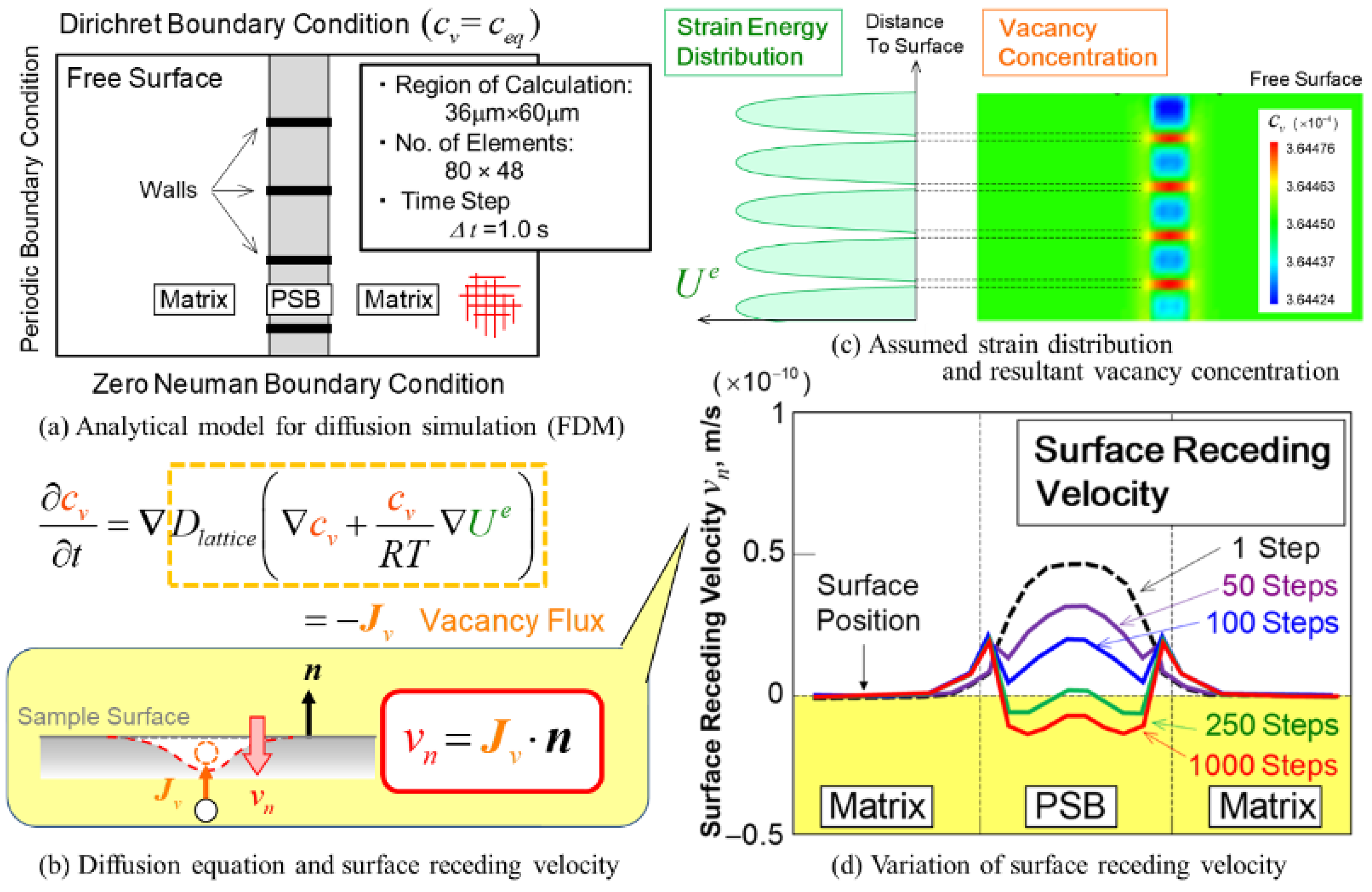
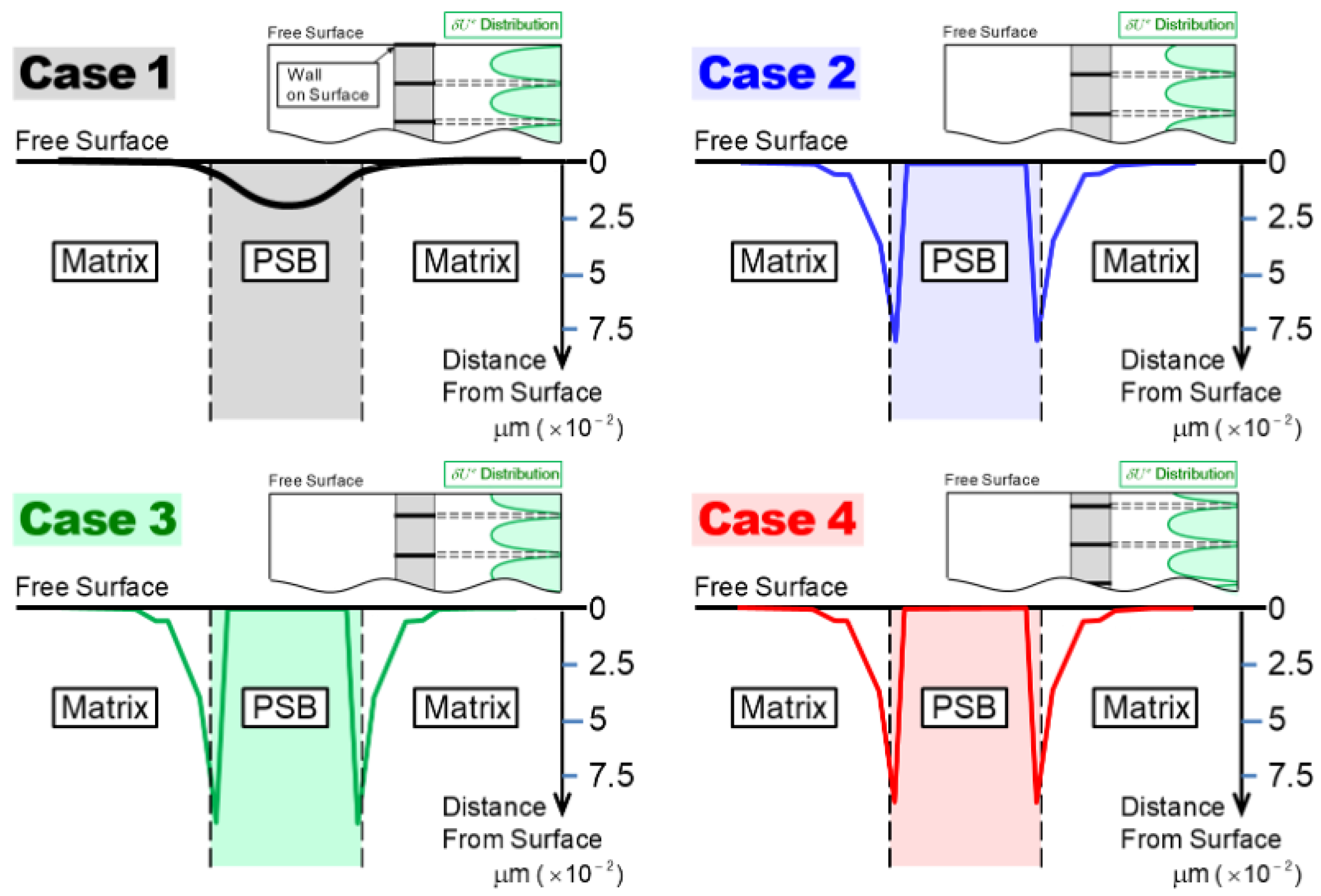
References
- Thompson. N.; Wadsworth. N.J.; Louat. N. The Origin of Fatigue Fracture in Copper. Philos. Mag. 1956, 1, 113–26. [Google Scholar] [CrossRef]
- Woods. P.J. Low-amplitude Fatigue of Copper and Copper-5 at. % Aluminium Single Crystals. Philos. Mag. 1973, 28, 155–91. [CrossRef]
- Polák, J. On the Role of Point Defects in Fatigue Crack Initiation. Mater. Sci. 1987, 92, 71–80. [Google Scholar] [CrossRef]
- Polák, J.; Petrenec, M.; Man, J. Dislocation Structure and Surface Relief in Fatigued Metals. Mater. Sci. A 2005, 400–401, 405–408. [Google Scholar] [CrossRef]
- Polák, J. Production, Annihilation and Migration of Point Defects in Cyclic Straining. Materialia 2020, 14, 100938. [Google Scholar] [CrossRef]
- Polák, J. Role of Persistent Slip Bands and Persistent Slip Markings in Fatigue Crack Initiation in Polycrystals. Crystals 2023, 13(2), 220. [Google Scholar] [CrossRef]
- Essmann, U.; Mughrabi, H. Annihilation of Dislocations during Tensile and Cyclic Deformation and Limits of Dislocation Densities. Philo. Mag. A 1979, 40(6), 731–756. [Google Scholar] [CrossRef]
- Essmann, U. Irreversibility of cyclic slip in persistent slip bands of fatigued pure f.c.c. metals. Philo. Mag. A 1982, 45(1), 171–190. [Google Scholar] [CrossRef]
- Jones, W. J. D.; Dover, W. D. Enhanced Diffusion Rates during the Fatigue of Metals. Nature 1966, 209(5024), 704–704. [Google Scholar] [CrossRef]
- Robergre, R.; Herman, H. Fatigue—Generation of Vacancies. Nature 1966, 211, 178–179. [Google Scholar] [CrossRef]
- Mughrabi, H. Dislocation Wall and Cell Structures and Long-Range Internal Stresses in Deformed Metal Crystals. Acta Metall. 1983, 31, 1367–1379. [Google Scholar] [CrossRef]
- Mughrabi, H.; Ungar, T.; Kienle, W.; Wilkens, M. Long-Range Internal Stress and Asymmetric X-Ray Line Broadening in Tensile Deformed [001]-Oriented Copper Single Crystals. Phil. Mag. A 1986, 53(6), 793–813. [Google Scholar] [CrossRef]
- Mughrabi, H.; Ackerman, F.; Herz, K. Persistent Slip Bands in Fatigued Face-Centered and Body-Centered Cubic Metals. in Fatigue Mechanics, Special Technical Publication 675 (ed. Long, J.), pp. 69–105, American Society for Testing and Materials (ASTM), 1979. [CrossRef]
- Bao-Tong, M.; Laird, C. Overview of Fatigue Behavior in Copper Single Crystals—I. Surface Morphology and Stage I Crack Initiation Sites for Tests at Constant Strain Amplitude. Acta Metall. 1989, 37(2), 325–336. [Google Scholar] [CrossRef]
- Essmann. U.; Gosele U.; Mughrabi H. A Model of Extrusions and Intrusions in Fatigued Metals. Philos. Mag. A 1981, 44(2), 405–426. [CrossRef]
- Suresh, S. Fatigue of Materials, 2nd ed.; Cambridge University Press, Cambridge, UK 1998; pp.53-68. [CrossRef]
- Bretschneider, J.; Holste, C.; Kleinert, W. Mechanical Behaviour and Development of Dislocation Arrangements of f.c.c. Single Crystals Fatigued at 77 K. MSEA 1995, 191(1–2), 61–72. [Google Scholar] [CrossRef]
- Li, P.; Li, S. X.; Wang, Z. G.; Zhang, Z. F. Fundamental Factors on Formation Mechanism of Dislocation Arrangements in Cyclically Deformed Fcc Single Crystals. Prog. Mater. Sci. 2011, 56(3), 328–377. [Google Scholar] [CrossRef]
- Ghoniem, N. M.; Walgraef, D.Instabilities and Self-Organization in Materials: Part I. Fundamentals. ibid Part II: Applications. Oxford University Press, 2008.
- Walgraef, D.; Aifantis, E. C. Dislocation Patterning in Fatigued Metals as a Result of Dynamical Instabilities. J. Appl. Phys. 1985, 58, 688–691. [Google Scholar] [CrossRef]
- Ghoniem, N. M.; Tong, S.-H.; Sun, L. Z. Parametric Dislocation Dynamics: A Thermodynamics-Based Approach to Investigations of Mesoscopic Plastic Deformation. Phys. Rev. 1999, B61, 913–927. [Google Scholar] [CrossRef]
- Kubin, L.; Sauzay, M. Persistent slip bands: the bowing and passing model revisited. Acta Mater. 2017, 132, 517–524. [Google Scholar] [CrossRef]
- Kubin, L.; Sauzay, M. Persistent slip bands: similitude and its consequences. Acta Mater. 2016, 104, 295–302. [Google Scholar] [CrossRef]
- Dodaran, M.; Khonsari, M. M.; Shao, S. Critical operating stress of persistent slip bands in Cu. Comput. Mater. Sci. 2019, 165, 114–120. [Google Scholar] [CrossRef]
- Brown, L.M. Dislocation bowing and passing in persistent slip bands. Philos. Mag. 2006, 86, 4055–4068. [Google Scholar] [CrossRef]
- El-Awady, J. A.; Ghoniem, N. M.; Mughrabi, H. Dislocation modelling of localized plasticity in persistent slip bands. TMS 2007, 23-35. Dislocation modelling of localized plasticity in persistent slip bands (researchgate.net).
- Repetto, E.; Ortiz, M. A Micromechanical Model of Cyclic Deformation and Fatigue-Crack Nucleation in f.c.c. Single Crystals. Acta Mater. 1997, 45(6), 2577–2595. [Google Scholar] [CrossRef]
- Nakai, Y. Evaluation of Fatigue Damage and Fatigue Crack Initiation Process by Means of Atomic-Force Microscopy. J. Soc. Mater. Sci. Jpn. 2001, 50(6 Appendix), 73–81. [Google Scholar] [CrossRef] [PubMed]
- Nakai, Y.; Kusukawa, T. Quantitative Evaluation of Slip-Band Growth and Crack Initiation in Fatigue of 70-30 Brass by Means of Atomic-Force Microscopy. Trans. Jpn. Soc. Mech. Eng. 2001, 67(655), 476–482. [Google Scholar] [CrossRef]
- Nakai, Y.; Maeda, K. Observations of fatigue Slip-Band Growth and Crack Initiation in α-Brass under Cyclic Shear Stresses by Means of Atomic-Force Microscopy. J. Mater. Sci. Soc. Jpn. 2003, 52(6), 625–630. [Google Scholar] [CrossRef]
- Hasebe, T. Interaction Fields Based on Incompatibility Tensor in Field Theory of Plasticity-Part I: Theory. IMMIJ 2009, 2(1), 1–14. [Google Scholar] [CrossRef]
- Hasebe, T. Interaction Fields Based on Incompatibility Tensor in Field Theory of Plasticity-Part II: Application. IMMIJ 2009, 2(1), 15–30. [Google Scholar] [CrossRef]
- Hasebe, T.; Sugiyama, M.; Adachi, H.; Fukutani, S.; Iida, M. Modeling and Simulations of Experimentally-Observed Dislocation Substructures Based on Field Theory of Multiscale Plasticity (FTMP) Combined with TEM and EBSD-Wilkinson Method for FCC and BCC Poly/Single Crystals. Mater. Trans. 2014, 55(5), 779–787. [Google Scholar] [CrossRef]
- Hasebe, T. Field Theoretical Multiscale Modeling of Polycrystal Plasticity. Trans. MRS-J 2004, 29, 3619–3624. [Google Scholar]
- Hasebe, T. Multiscale Crystal Plasticity Modeling based on Field Theory. CMES 2006, 11, 145–156. [Google Scholar] [CrossRef]
- Yokoi, T.; Takahashi, M.; Maruyama, N.; Sugiyama, M. Application of Controlled Cu Nano-Precipitation for Improvement in Fatigue Properties of Steels. Nippon Steel Tech. Rep. 2005, 91, 49–55. [Google Scholar]
- Yokoi, T.; Takahshi, M.; Maruyama, N.; Sugiyama, M. Cyclic Stress Response and Fatigue Behavior of Cu Added Ferritic Steels. J. Maters. Sci. 2001, 36, 5757–5765. [Google Scholar] [CrossRef]
- Chen, Z.; Kioussis, N.; Ghoniem, N.; Hasebe, T. Lubricant Effect of Copper Nanoclusters on the Dislocation Core in α − Fe. Phys. Rev. B 2008, 77(1), 014103. [Google Scholar] [CrossRef]
- Kondo, K. Non-Riemannian Geometry of Imperfect Crystals from a Macroscopic Viewpoint RRAG Memoirs, 1 D-I, 458–469. Published online by Cambridge University Press, 1955.
- Kondo, K. RAAG Memoirs of Unifying Study of Basic Problems in Engineering and Physical Science by Means of Geometry, Gakujutsu Bunken Fukyu-kai, 1960.
- Ashby, B. F. The Deformation of Plastically Non-Homogeneous Materials. Philos. Mag. 1970, 21, 399–424. [Google Scholar] [CrossRef]
- Khan, A. S. and Huang, S. Continuum Theory of Plasticity, Wiley Interscience, 1995.
- Nemat-Nasser, S. Plasticity, A Treatise on Finite Deformation of Heterogeneous Inelastic Materials, Cambridge University Press, 2004.
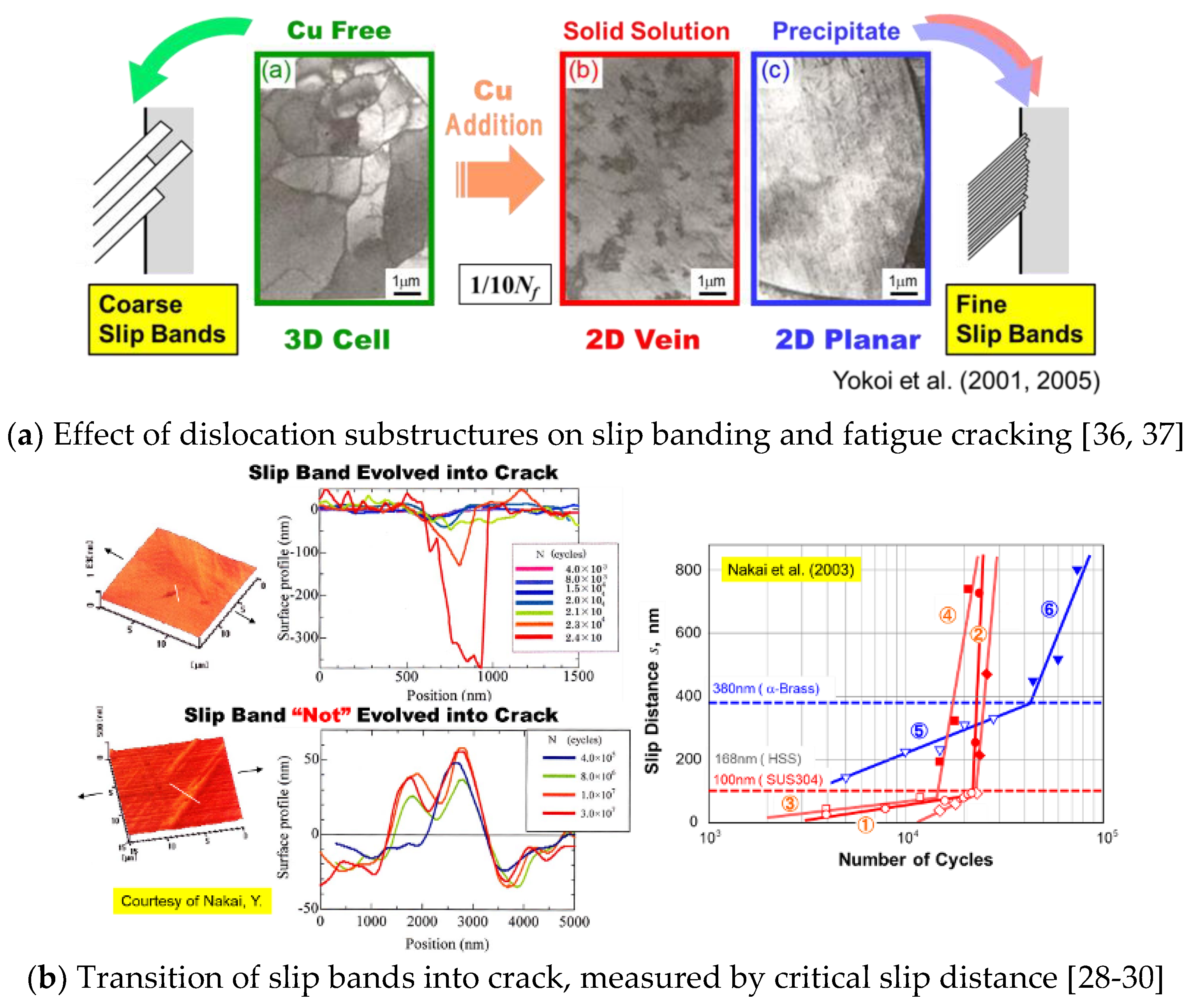
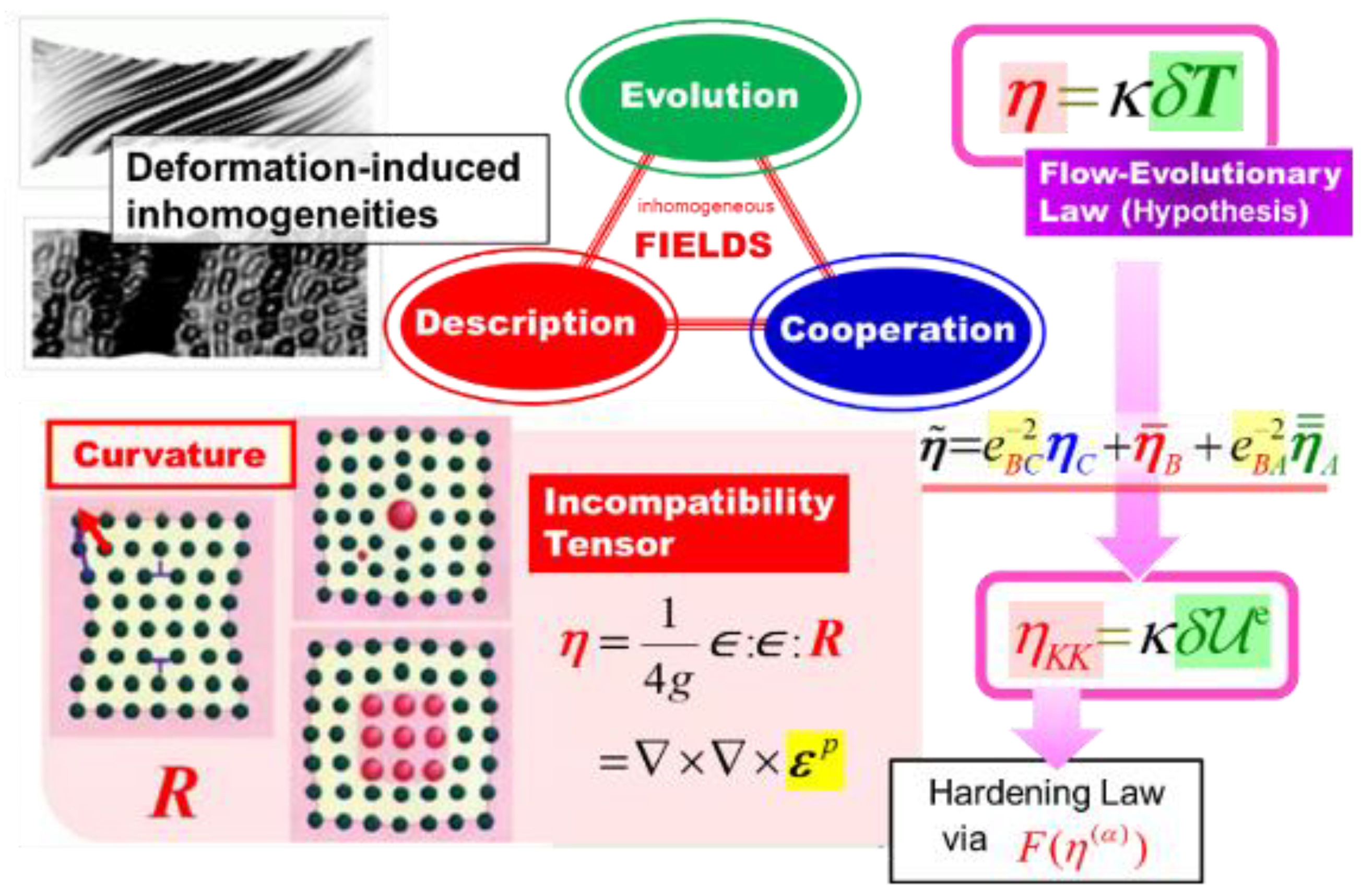
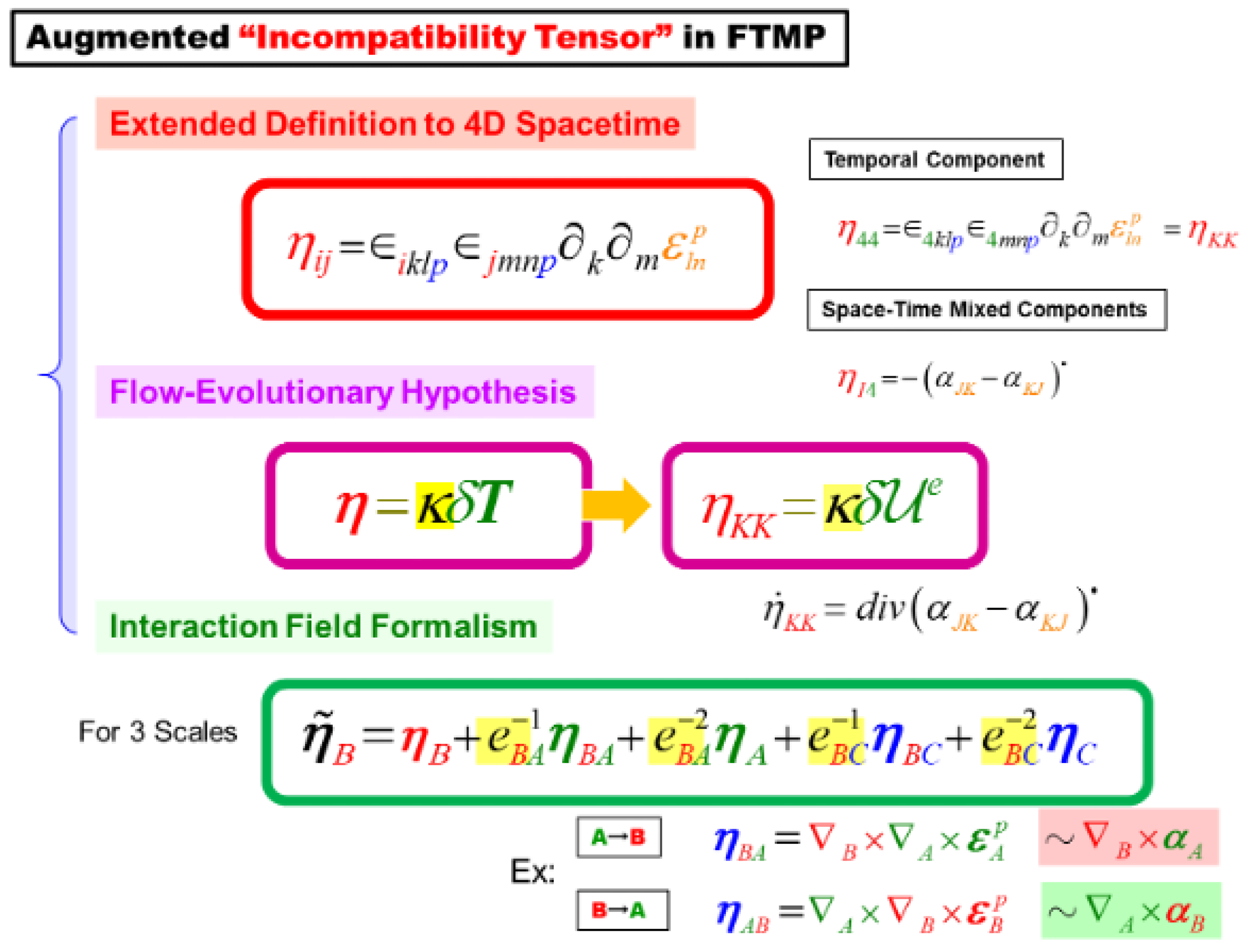

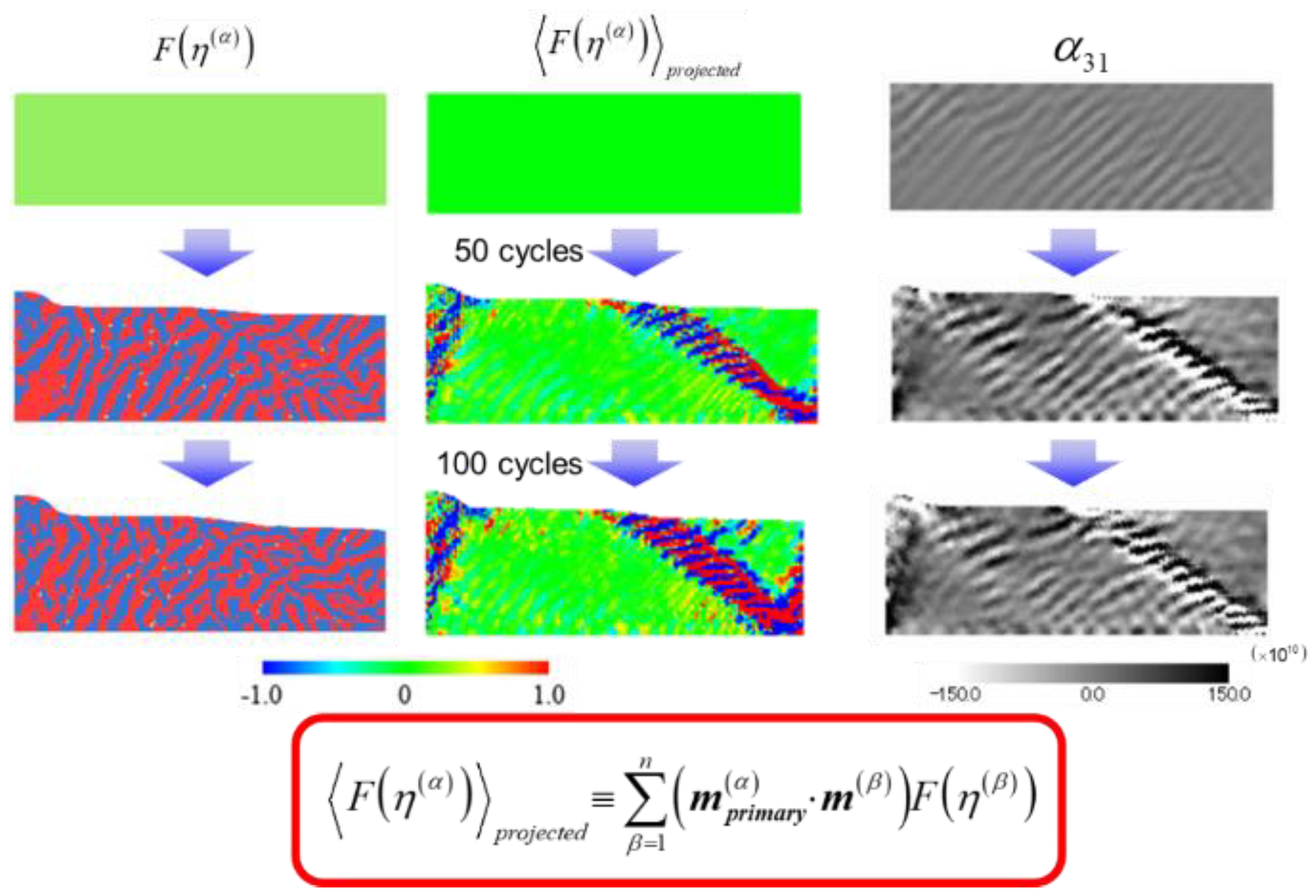
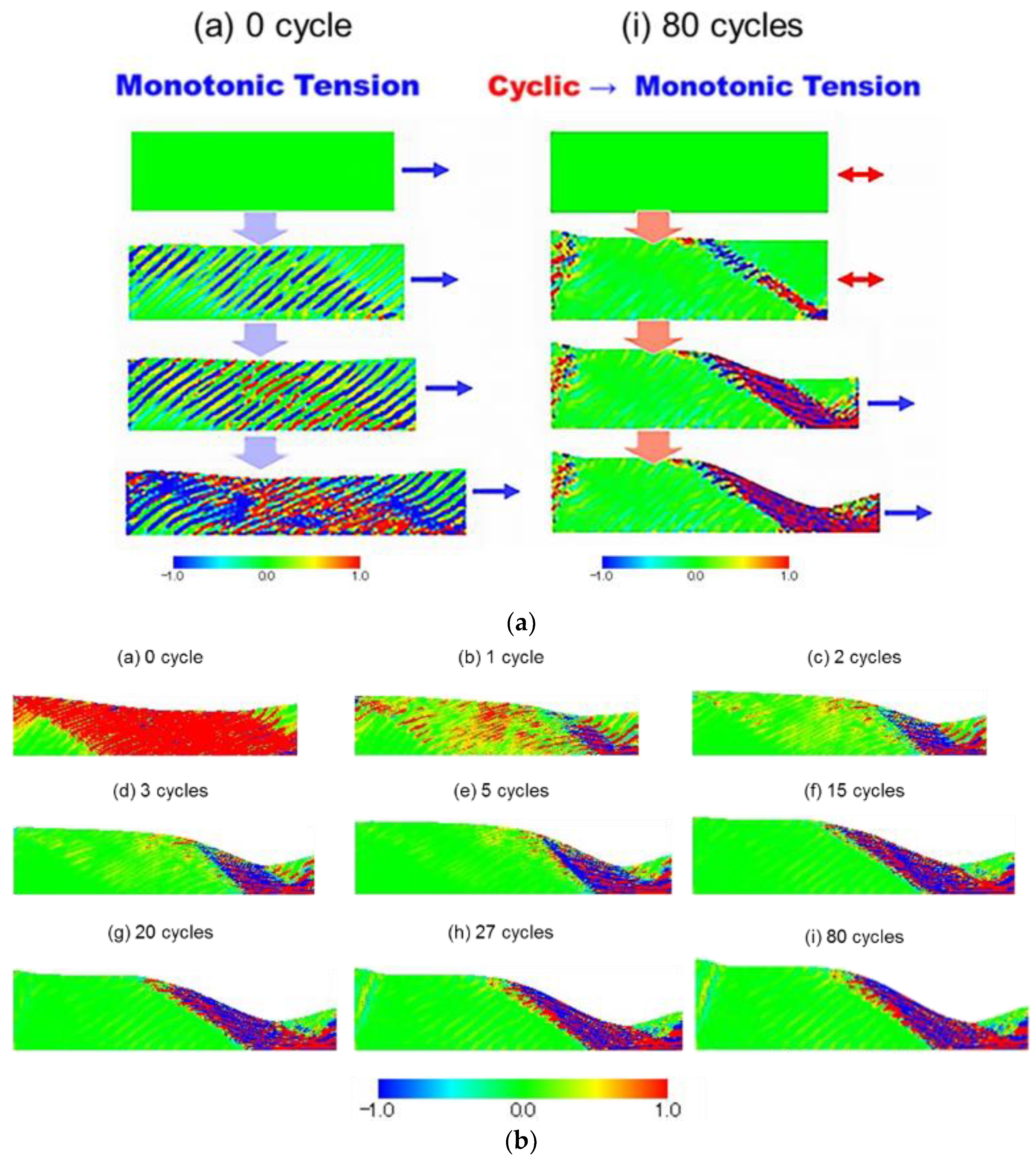
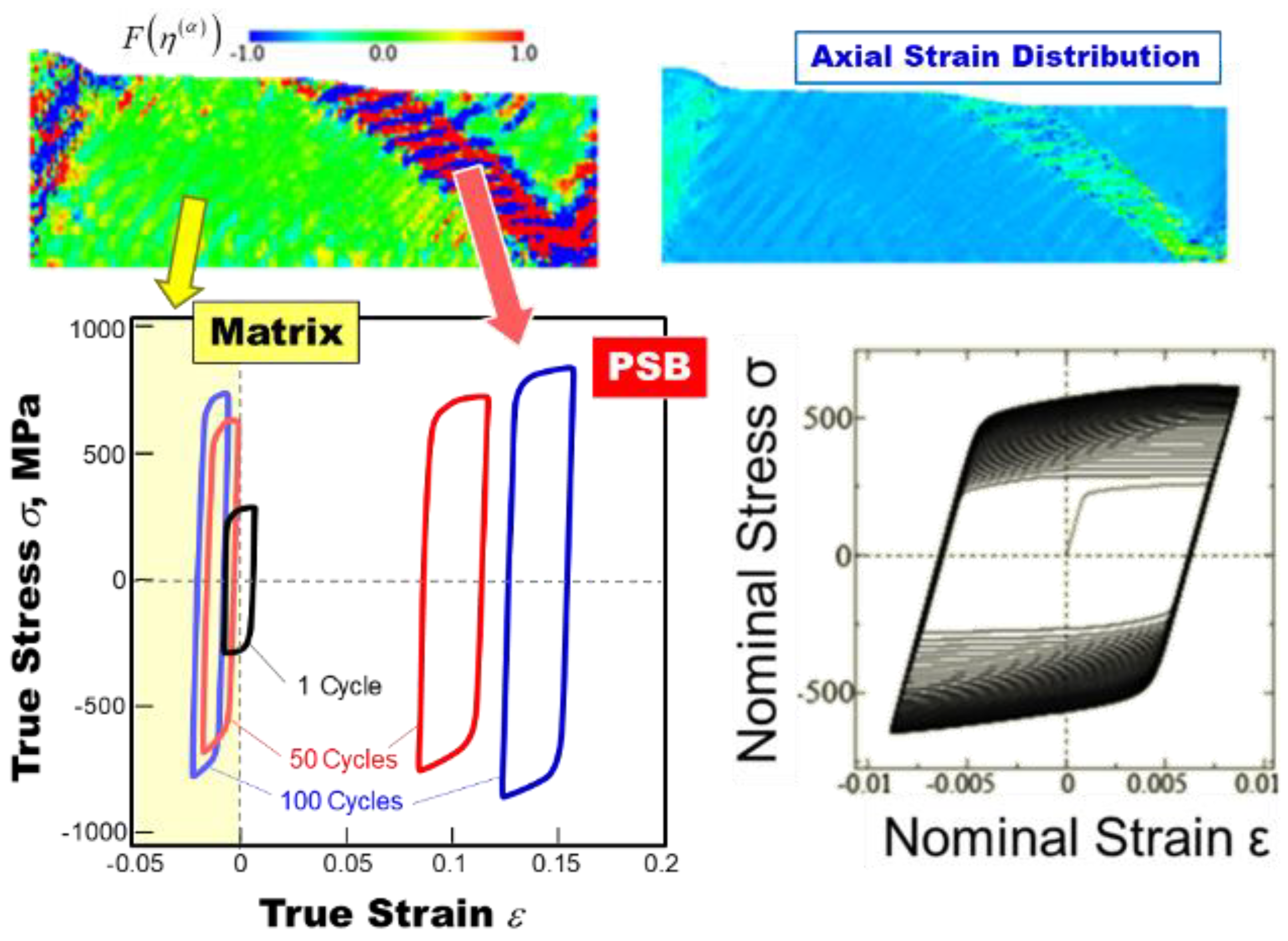
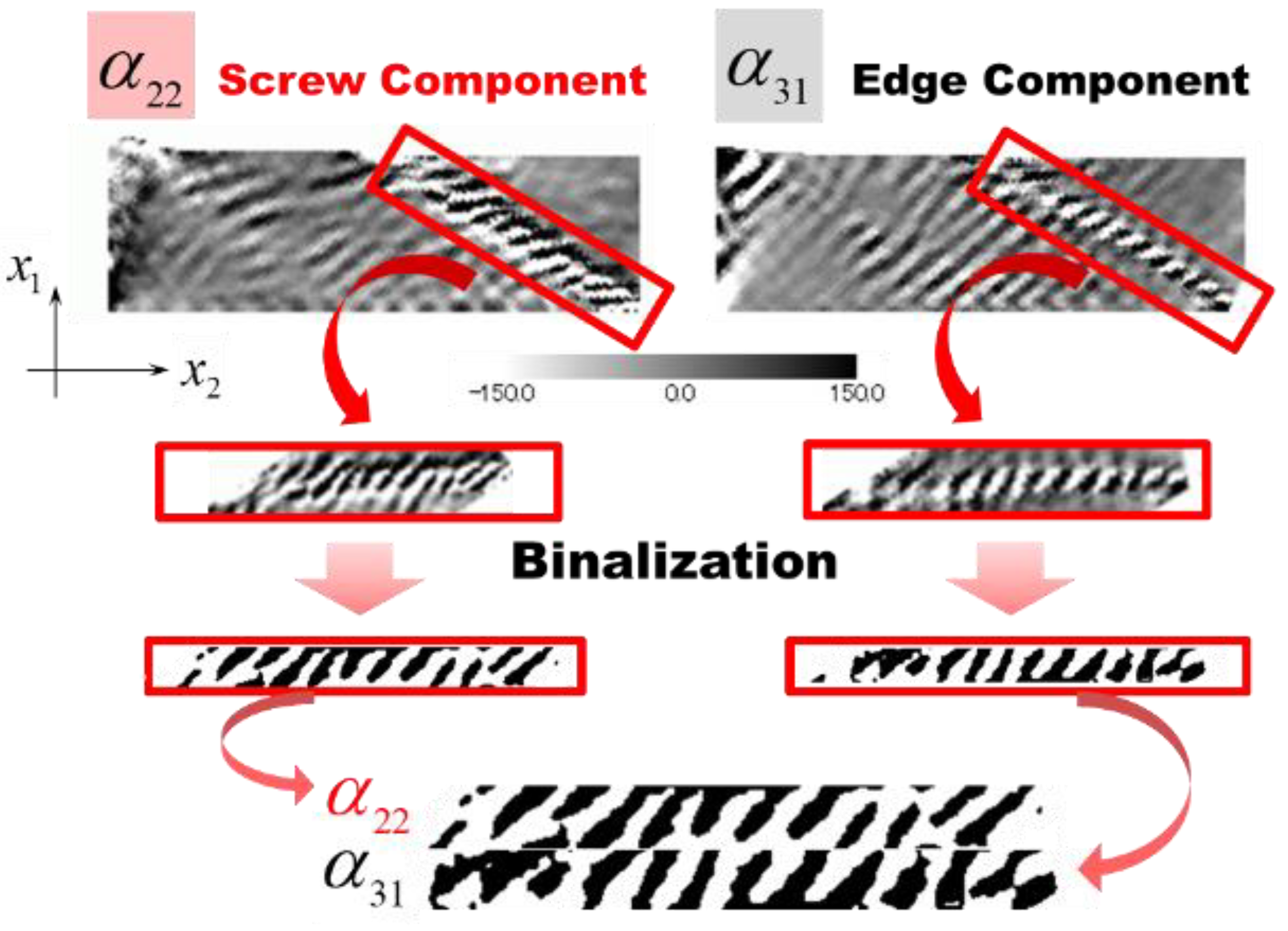
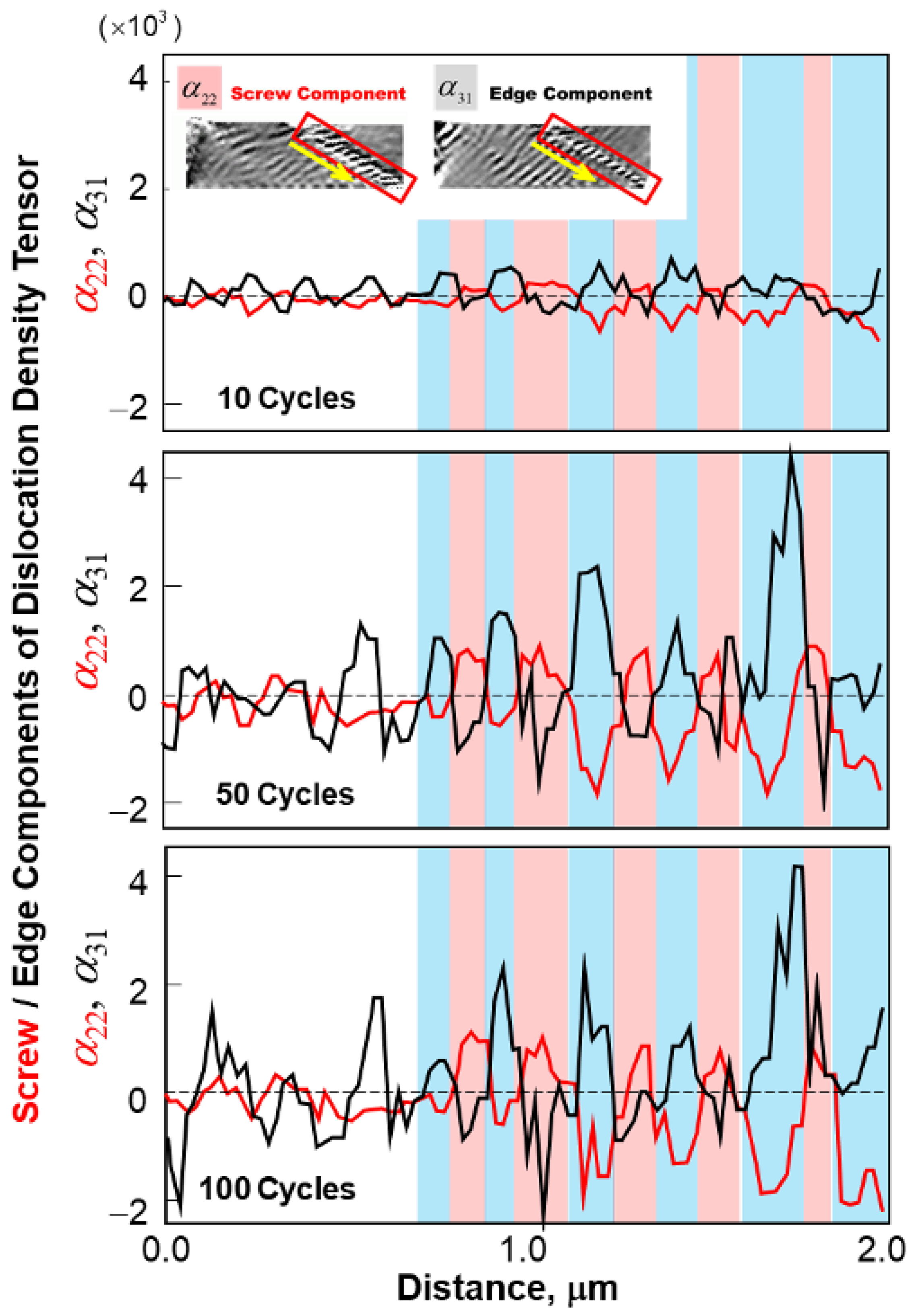
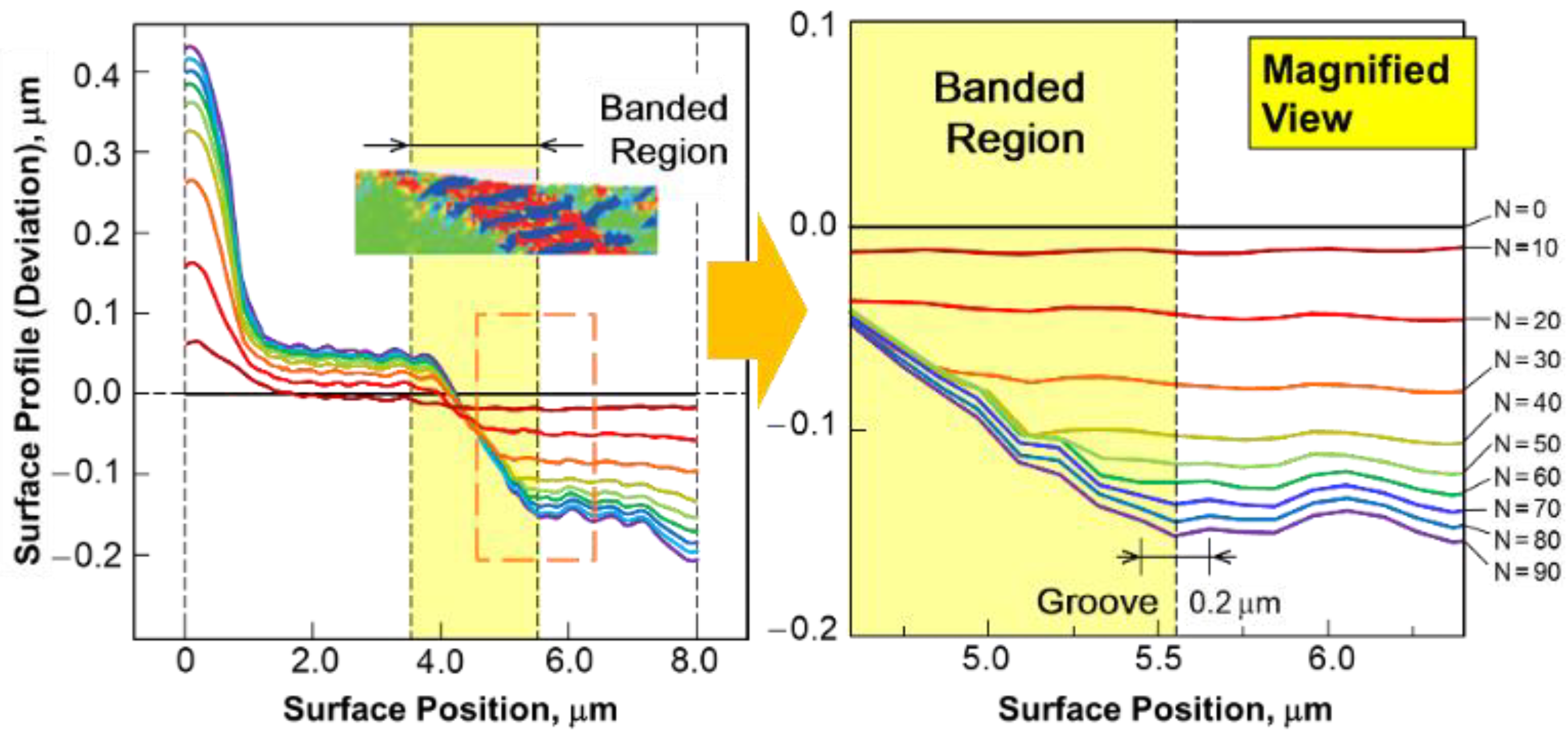


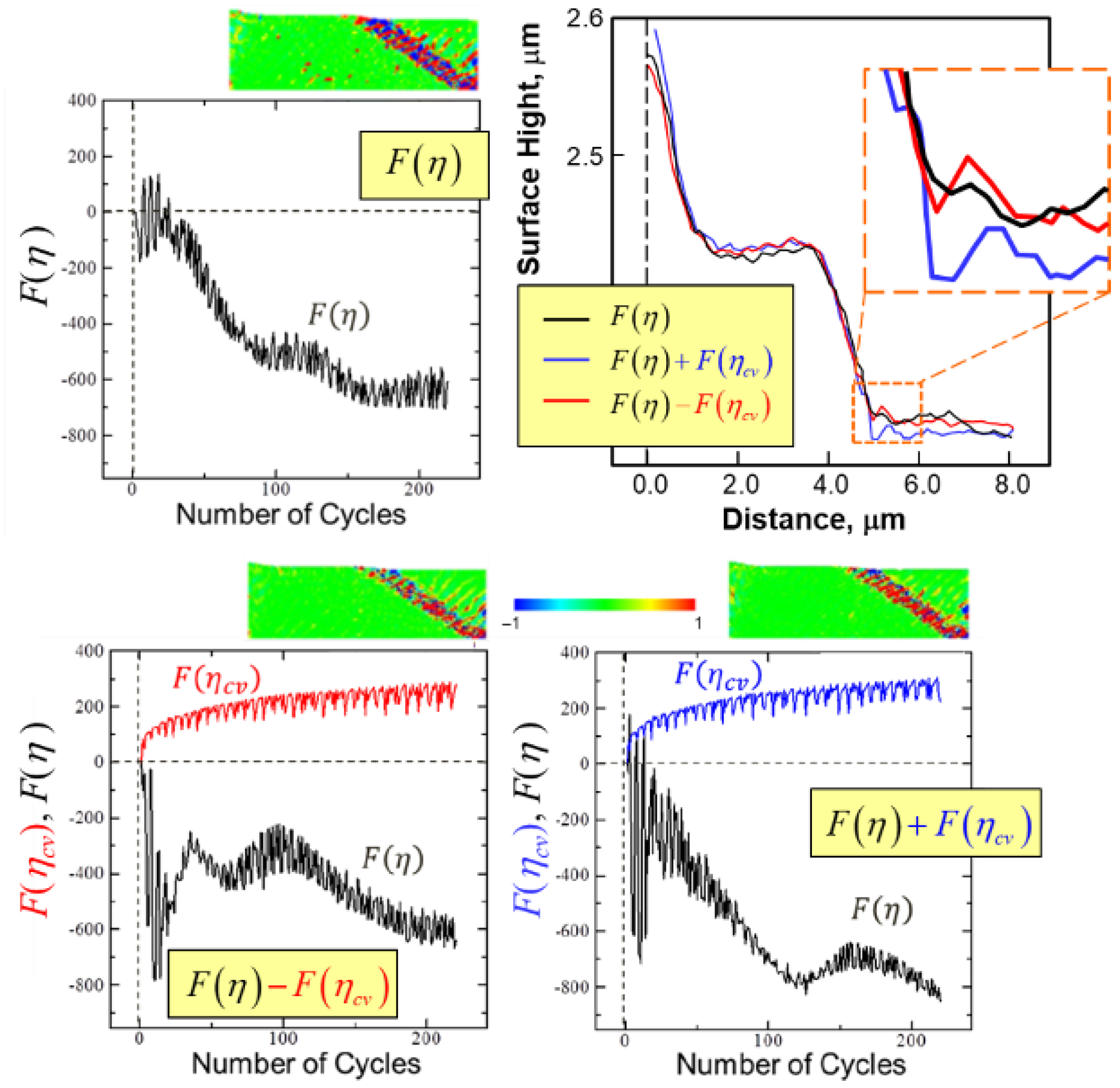

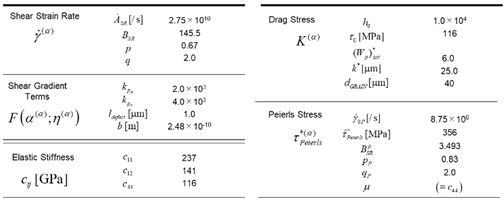 |
Disclaimer/Publisher’s Note: The statements, opinions and data contained in all publications are solely those of the individual author(s) and contributor(s) and not of MDPI and/or the editor(s). MDPI and/or the editor(s) disclaim responsibility for any injury to people or property resulting from any ideas, methods, instructions or products referred to in the content. |
© 2024 by the authors. Licensee MDPI, Basel, Switzerland. This article is an open access article distributed under the terms and conditions of the Creative Commons Attribution (CC BY) license (http://creativecommons.org/licenses/by/4.0/).





